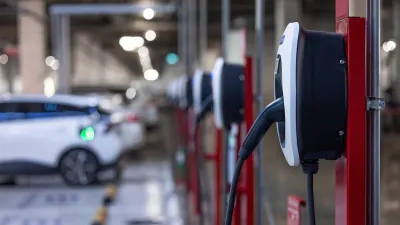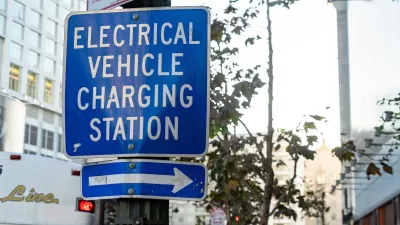You've heard of road rage. Electric vehicle drivers at Silicon Valley workplaces where EVs substantially exceed chargers may experience "charge rage" when a "top-off" can take as long as eight hours.
When is the appropriate time to disconnect an electric vehicle from its charger, especially when you really need a charge? Problems have erupted in some parking lots over this issue. While some employers have responded by requiring drivers to book their charging times, "a host of thorny etiquette issues have arisen," writes Dana Hull.
How many charging stations does a company need? One large Silicon Valley employer found that the 16 stations it installed in 2010 has created problems for the 61 employees (of the 1,800 member work force) who drive electric vehicles today. So how many chargers should an accommodating employer provide?
According to the operator of the world's largest network of electric vehicle charging stations, ChargePoint, "they need one charging port for every two of their employees' electric vehicles," writes Hull. But even in Silicon Valley, famous for the perks many companies lavish on their workers, adding charging stations may be difficult "as many companies lease their facilities instead of owning them outright, making them loath to install permanent infrastructure. In addition, the chargers themselves are expensive."
"If you don't maintain a 2-to-1 ratio, you are dead," said ChargePoint CEO Pat Romano. "Having two chargers and 20 electric cars is worse than having no chargers and 20 electric cars. If you are going to do this, you have to be willing to continue to scale it."
FULL STORY: 'Charge rage': Too many electric cars, not enough workplace chargers

Planetizen Federal Action Tracker
A weekly monitor of how Trump’s orders and actions are impacting planners and planning in America.

Restaurant Patios Were a Pandemic Win — Why Were They so Hard to Keep?
Social distancing requirements and changes in travel patterns prompted cities to pilot new uses for street and sidewalk space. Then it got complicated.

Map: Where Senate Republicans Want to Sell Your Public Lands
For public land advocates, the Senate Republicans’ proposal to sell millions of acres of public land in the West is “the biggest fight of their careers.”

Maui's Vacation Rental Debate Turns Ugly
Verbal attacks, misinformation campaigns and fistfights plague a high-stakes debate to convert thousands of vacation rentals into long-term housing.

San Francisco Suspends Traffic Calming Amidst Record Deaths
Citing “a challenging fiscal landscape,” the city will cease the program on the heels of 42 traffic deaths, including 24 pedestrians.

California Homeless Arrests, Citations Spike After Ruling
An investigation reveals that anti-homeless actions increased up to 500% after Grants Pass v. Johnson — even in cities claiming no policy change.
Urban Design for Planners 1: Software Tools
This six-course series explores essential urban design concepts using open source software and equips planners with the tools they need to participate fully in the urban design process.
Planning for Universal Design
Learn the tools for implementing Universal Design in planning regulations.
Heyer Gruel & Associates PA
JM Goldson LLC
Custer County Colorado
City of Camden Redevelopment Agency
City of Astoria
Transportation Research & Education Center (TREC) at Portland State University
Camden Redevelopment Agency
City of Claremont
Municipality of Princeton (NJ)




























